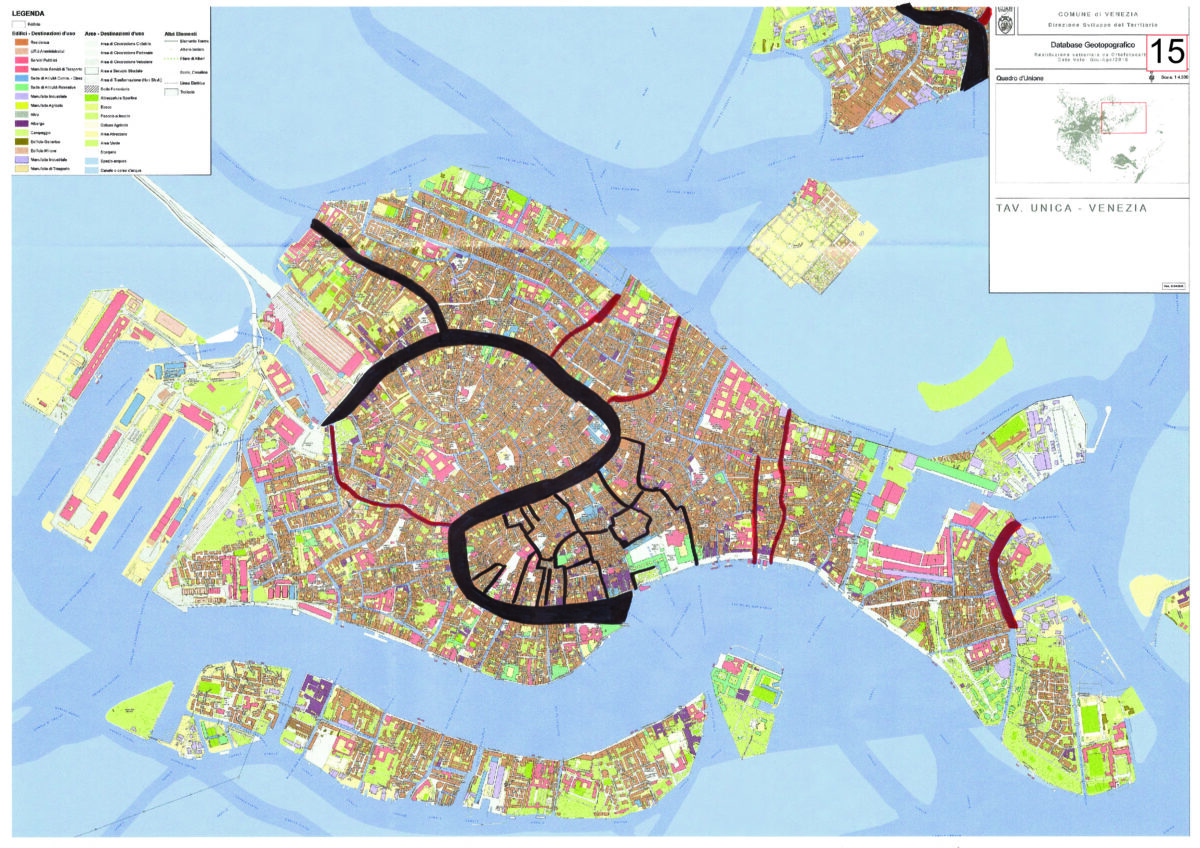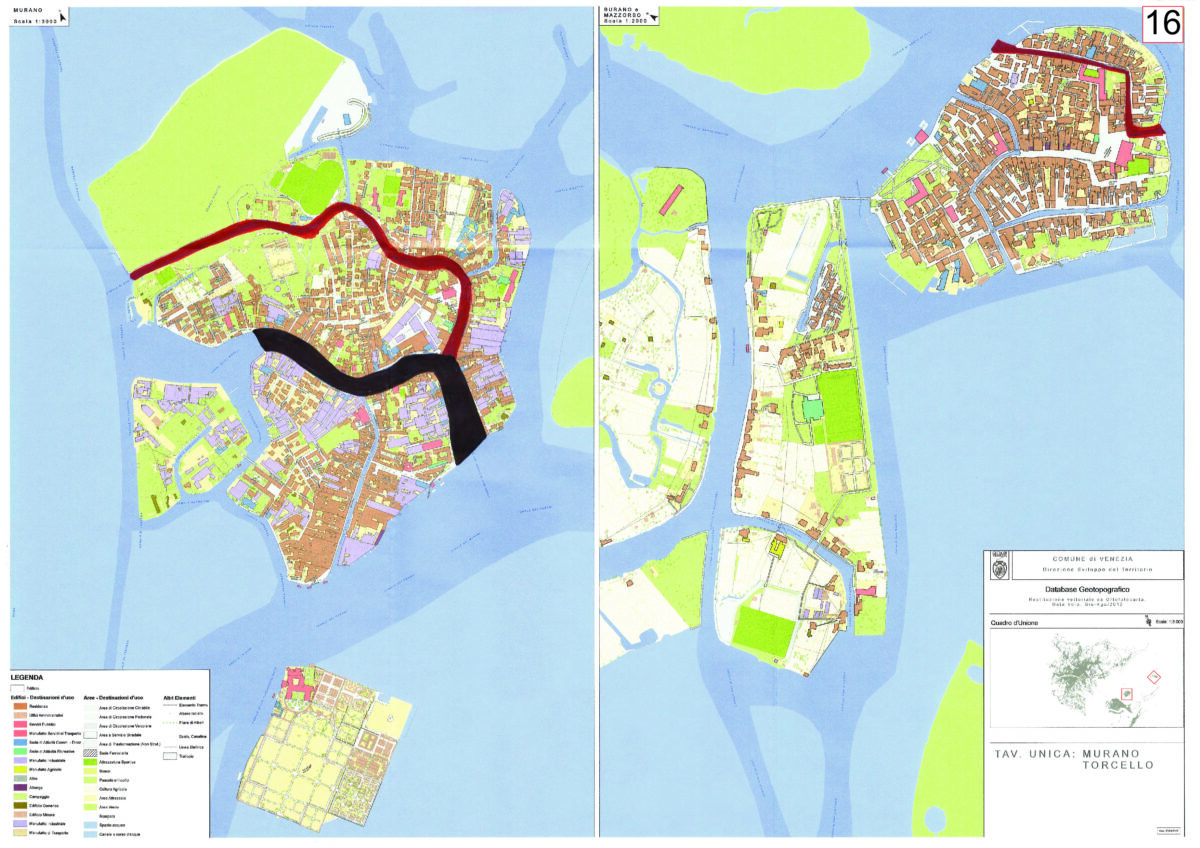The municipal administration of Venice made an almost total ban on kayaks in the city canals on August 1st, 2018. Venice Kayak took the city to court and on March 20th, 2019, the TAR (tribunale amministrativo regionale – the regional administrative tribunal) sentenced in our favour.
On June 3rd, 2019, the city administration issued practically the same ban again, with some very minor changes, but with some of the formal issues from the first ban corrected. In our view they are blatantly in breach of the first sentence, but they did it anyway.
The TAR held a preliminary hearing of the case on July 3rd, because Venice Kayak had requested a temporary suspension of the ban until the actual hearing is scheduled. Unfortunately, the tribunal has not suspended the city decision so for not the ban on kayaks in the city canals stand.
However, it also doesn’t.
Canali and rii
The first part of the ban included a total ban on kayaking on the Grand Canal, the Canale Cannaregio (where we never to) and on any other canals where public transport is running.
The wording of the second part of the ban is as follows, in Italian (translation below), with a list of boat types left out:
Nei rii dei Greci – San Lorenzo, Santa Giustina, Sant’Antonin – Pietà, di Noale – Canale delle Misericordia, Novo-di Ca’ Foscari, dei Santi Apostoli-Gesuiti e nei restanti canali della Z.t.l. lagunare è vietata la navigazione dei natanti denominati … , kayak, … , dal lunedì al venerdì dalle 07.00 alle ore 17.00, e al sabato dalle ore 7.00 alle ore 15.00, festivi esclusi. E’ comunque escluso l’attraversamento del Canal Grande.
Comune di Venezia, ordinanza 390/2019
Our translation in English:
In the rii dei Greci – San Lorenzo, Santa Giustina, Sant’Antonin – Pietà, di Noale – Canale delle Misericordia, Novo-di Ca’ Foscari, dei Santi Apostoli-Gesuiti and in the remaining canals of the limited traffic area of the lagoon, all navigation is forbidden for boats called … , kayak, … , from Monday to Friday from 07:00 to 17:00, and on Satuday from 7:00 to 15:00, holidays excluded. It is in any case excluded crossing the Grand Canal.
For any normal person here in Venice the words “the remaining canals of the limited traffic area of the lagoon” would mean all the waterways of the city of Venice, and of the Lido, the Giudecca, Murano and Burano.
For the city’s lawyers it is not so.
In Venice most canals are denominated rio (plural: rii), like Rio de la Tana, or Rio di San Felice. A few are, however, denominated canale (plural: canali) The reason is historic. The rii were the smaller city canals, and the canali were either larger waterways (like the Grand Canal or Canale Cannaregio) or because centuries ago they were considered canals in the lagoon, not in the city (like Canale di San Pietro).
So what is banned?
For the lawyers of the city administration the words “the remaining canals of the limited traffic area of the lagoon” refers exclusively to the urban canals denominated canale, and not the rii.
They have repeated this numerous times in a brief to the tribunal, and the tribunal has based its decision not to suspend the ban on this reading, which means that the ban only affects a few canals, as shown on the two maps below supplied by the city lawyers to the tribunal.
The canals marked in black are banned at all times for kayaks, either because there are public transport routes there, or because they’re part of the Sestiere San Marco.
The canals marked in red are limited from 7:00 to 17:00 Monday to Friday, and 7:00 to 15:00 on Saturdays.
In Venice city the limited canals are the ones specifically named in the ban, and just one more canal, the Canale di San Pietro, which, lo and behold, is placed just so that it prevents Venice Kayak from entering the city from our base on the Certosa island. Surely just a coincidence that the only additional canal in Venice is the one impeding our work the most.
On Murano the black canals is only a part of where public transport circulates, and the red canals is one with very low intensity traffic. It is very hard to understand why exactly that canal should somehow be more dangerous than many other areas in the city.
On Burano they have banned one canal only. It is a canal blocked by a bridge at street level and some huge posts, so motorised traffic physically cannot pass. Yet, somehow, magically, this canal is much more dangerous for kayaks than the few other canals on Burano where motorboats can and do pass.
The mind boggles at the sheer logic and rational thinking behind this.
Compared to last year?
The wording in the June 2019 ban is almost identical to the wording in the August 2018 ban.
The words “the remaining canals of the limited traffic area of the lagoon” are the same in the two texts.
Last year, in several briefs to the tribunal and during the actual hearings, the lawyers of the city didn’t bring out this different reading of the words of the decision of the city administration.
Yet the words are the same.
Somehow in the process, the city’s lawyers have decided that the same words have a very different and unusual meaning.
What’s next?
Venice Kayak has appealed the rejection of the suspension of the ban to the consiglio di stato in Rome. We don’t know when this appeal will be heard.
There will at some point be an udienza di merito, that is, the definitive hearing after which the TAR will in due course publish a sentence. We do not know when that will be.
If you can, please help us cover the expenses for the court case.



Leave a Reply